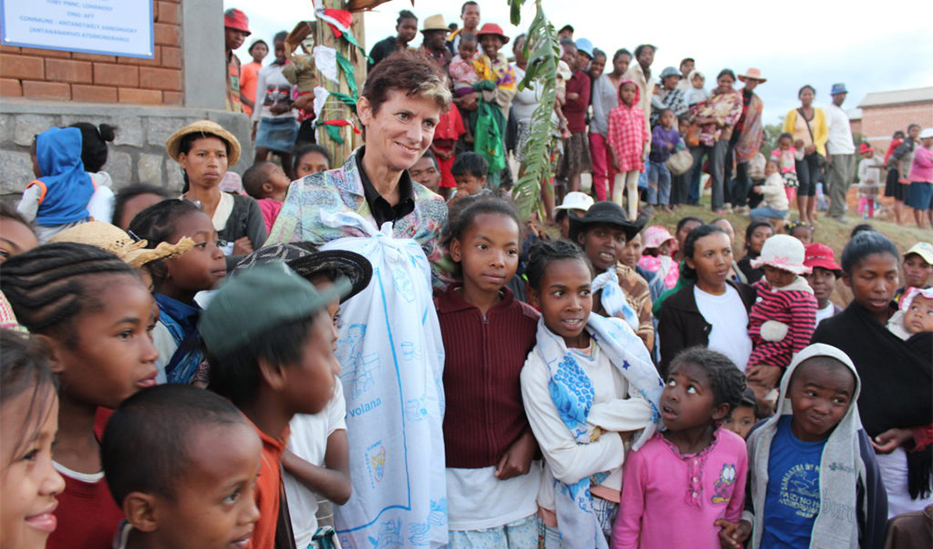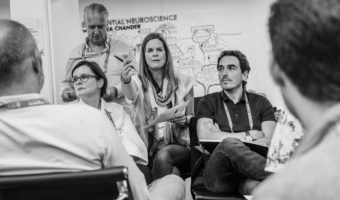In 2019, I do not think we need to talk about ‘why’ when it comes to scaling-up nutrition. We are far beyond that. According to the report The State of Food Security and Nutrition in the World 2018, for the third year in a row there has been a rise in world hunger. The absolute number of undernourished people, that is, those facing chronic food deprivation, has increased to nearly 821 million in 2017, from around 804 million in 2016. However, at least ten countries have managed to reduce the prevalence of stunting between 2015 and 2017. This shows us that where there is a will, there is a way.
But progress is too slow, with causes not just linked to diet, but challenged by conflict and climate-related shocks and stressors that have aggravated hunger and malnutrition in many countries. At the same time, overweight, obesity and chronic diseases are increasing, creating a double – or triple – burden of malnutrition. Malnutrition is expensive: it erodes and undermines the prosperity of women, men, their families and nations; it impairs children’s brains and bodies, thereby impacting their health, education and productivity in the future.
It is then crucial to focus on the ‘what’ and the ‘how’ – when it comes to scaling- up nutrition, for impact and results at scale. In my view, there are three key ingredients that comprise the ‘recipe for success’:
- government ownership
- multi-sectoral and multi-stakeholder collaboration for aligned implementation, and
- investment.
Government ownership
Today, 60 countries and four Indian states drive the SUN Movement. Through their experience, we have seen that government ownership, commitment and leadership over the nutrition agenda have together proven to be the only sustainable way to drive down stunting and unlock the potential of people, societies and nations.
Since joining SUN, Ethiopia has seen a 20% drop in child malnutrition. At the root of this success, you will find a government’s sustained commitment, and the impressive progress achieved in reducing poverty and expanding investments in basic social services. The government has started to integrate nutrition-related actions into various initiatives, coordinated by the Ministry of Health, as well as into its agricultural programmes. Most notably, nutrition was integrated into the fourth phase of the country’s Productive Safety Net Program (PSNP) in early 2016. PSNP, led since 2005 by the Ministry of Agriculture, is one of the largest social protection programmes in sub-Saharan Africa, and aims to improve food security and nutrition for more than 8 million people who participate in public works in return for food or cash.
Zambia can be proud to say that they have one of the world’s highest exclusive breastfeeding rates, at 72.5% between a baby’s birth and when she or he is 5 months old. Much of this success is because of legislation and policies that strive to ensure an enabling environment for women to better combine work and family. For instance, Zambian legislation provides for 120 days’ maternity leave for workers considered vulnerable. Today 13 SUN countries, mostly East and Southern African nations, can boast exclusive breastfeeding rates of above 60%.
‘Government ownership, commitment and leadership are the only sustainable way to drive down stunting.’
Bangladesh, an ‘early riser’ in the SUN movement, joining in 2010, has made significant strides to take forward nutrition policy and programmes multi- sectorally through the revitalisation of the Bangladesh National Nutrition Council (BNNC), the apex policy and coordination body, with the Honourable Prime Minister as the Chair. There is also a costed, ten-year second National Plan of Action on Nutrition (NPAN2) for 2016–2025. In Bangladesh, the SUN Movement has influenced the government to increase its commitment on nutrition and has catalysed unique networks for multi-stakeholder collaboration involving civil society, development partners, and United Nations agencies.
Kenya officially joined the SUN Movement in August 2012, signalling the country’s commitment to undertake coordinated actions to improve nutrition. Concurrently, the country launched the first National Nutrition Action Plan (NNAP 2012–2017) and adopted a set of 11 High Impact Nutrition Interventions targeting the critical first 1000 days of a child’s life. Today, Kenya is the only country on course towards attainment of all World Health Assembly targets for nutrition. The diverse range of factors that have contributed to a reduction in stunting lend credence on the effectiveness of the multi-sectoral approach.
It is clear that political ownership and commitment, translated into robust policies, plans and legal frameworks, are a large contributor to this impact. Leadership most often starts from the top, and when it comes from the highest level of government, such as President or Prime Minister, it can make a big difference. Political figures have the power to convene key sectors and stakeholders and ensure a whole-government approach in tackling the drivers of malnutrition – such as lacking gender inequality, lacking investment in education, or nutrition-blind agricultural actions. What I have learned, as a Minister of Agriculture, Nature and Food Quality in the Netherlands and in subsequent roles, is that political commitment does not simply exist or come about accidentally. Quite the opposite: it can be created and strengthened over time – through strategic action.
Multi-sectoral and multi-stakeholder collaboration and implementation
Agreement around national and common results helps to shape multi-sectoral and multi-stakeholder ways of working. A large increase has been seen in the number of SUN member countries with national nutrition plans in place: 42 countries bring together sectors and stakeholders in a whole-government approach to address malnutrition. Further to this, SUN countries are increasingly coming together to look at progress and set priorities for the future. Between April and August last year, 54 SUN countries assessed their own performance in scaling-up nutrition, in the yearly Joint Assessment exercise. This is the highest number ever. This exercise, a unique feature of SUN, brings out an interesting overview of how stakeholders and sectors work together at national and sub- national levels: 55 SUN countries – four more than in 2016–2017 – have an active multi-stakeholder platform at the national level. In 33 countries these platforms also work at the sub-national level, supporting local actions and implementation, across sectors such as women’s empowerment, agriculture, water and sanitation, health, social protection and education.
Government ownership and collaboration between departments of health, education, agriculture, social protection, economic development and finance, as well as results-focused multi-stakeholder nutrition plans, are the game- changing factors for structural impact. There must be sufficient domestic investment and a reliable data system to support this.
Investing in nutrition: not just right but smart
Nutrition is central to sustainable development. Good nutrition is not just an outcome of development, but also a driver of human development and economic growth. Better-nourished populations, starting with children, do better at school and are eventually more economically productive, and the world’s future economic success lies in increasing human capital. Human capital is an important determinant of labour productivity and raising labour productivity lies at the heart of raising incomes. To use the words of my friend Akinwumi Adesina, President of the African Development Bank, developing Africa’s ‘grey matter infrastructure’ through multi-sectoral investments in nutrition is the best way to ensure children are able to grow today and lead in the future.
It is estimated that today 4% of general government expenditure across SUN countries goes towards nutrition-relevant actions. In 2016, only Comoros invested more than 5% of its national budget in good nutrition. However, many countries, such as Côte d’Ivoire, have made great progress in matching their government-driven financing with that of development partners.
‘For a typical country, every dollar invested in reducing chronic undernutrition in children yields a 16 dollar return’
No country in this world can afford a GDP loss of between 3% and 16% each year – the actual cost of malnutrition. On the other hand, actions to reduce chronic undernutrition are excellent investments; for a typical country, every dollar invested in reducing chronic undernutrition in children yields a 16-dollar return.
Alongside this, the smartest bets to prevent all forms of malnutrition are investing in both nutrition-specific and nutrition-sensitive interventions and supporting a paradigm shift from the traditional sector-driven approach to nutrition and food security through a stronger multi-stakeholder and multi-sectoral approach. This should embrace all components of food systems and enhance their capacity to deliver healthy diets to all, protecting people and planet alike.
To ensure further impact during the first 1000 days of a child’s life, there is a need to:
- keep political attention high in the offices of Presidents and Prime Ministers
- scale-up cost-effective actions for gender equality and nutrition-sensitive and sustainable food systems, as well as leveraging the contributions of multiple sectors
- make the investment case with Ministers of Finance to increase domestic nutrition investments
- look towards innovative sources of finance, such as private revenue and multilateral instruments, for example the Global Financing Facility (GFF).
As a platform for collaboration and inspiration for 60 countries and four Indian states, the SUN Movement is focused on growing as a unique space to support action for investing in children. Raising good nutrition during the first 1000 days of a child’s life, to prevent stunting and wasting as well as obesity, as a political priority will not only ensure it is globally recognised as a foundation for children to reach their full physical and cognitive potential, it will also catalyse the implementation of the 2030 Agenda and the eventual attainment of all 17 of its Sustainable Development Goals.
References can be found in the PDF version of the article.



